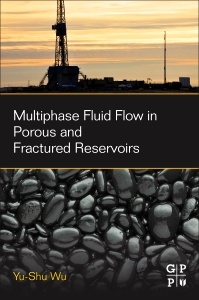Description
Multiphase Fluid Flow in Porous and Fractured Reservoirs
Author: Wu Yu-Shu
Language: English
Subjects for Multiphase Fluid Flow in Porous and Fractured Reservoirs:
Support: Print on demand
Description
/li>Contents
/li>Biography
/li>Comment
/li>
Multiphase Fluid Flow in Porous and Fractured Reservoirs discusses the process of modeling fluid flow in petroleum and natural gas reservoirs, a practice that has become increasingly complex thanks to multiple fractures in horizontal drilling and the discovery of more unconventional reservoirs and resources.
The book updates the reservoir engineer of today with the latest developments in reservoir simulation by combining a powerhouse of theory, analytical, and numerical methods to create stronger verification and validation modeling methods, ultimately improving recovery in stagnant and complex reservoirs.
Going beyond the standard topics in past literature, coverage includes well treatment, Non-Newtonian fluids and rheological models, multiphase fluid coupled with geomechanics in reservoirs, and modeling applications for unconventional petroleum resources. The book equips today?s reservoir engineer and modeler with the most relevant tools and knowledge to establish and solidify stronger oil and gas recovery.
Preface
Acknowledgements
Ch 1: Introduction
Ch 2: Multiphase Flow in Porous Media
Ch 3: Governing Equations and Mathematical Models
Ch 4: Numerical Model and Formulation
Ch 5: Two-Phase Immiscible Displacement
Ch 6: Extensions of Buckley-Leverett Theory
Ch 7: Immiscible Displacement of Non-Newtonian Fluids
Ch 8: Non-Darcy Flow of Immiscible Fluids
Ch 9: Multiphase Flow in Fractured Porous Media
Ch 10: Multiphase Fluid and Heat Flow in Porous Media
Ch 11: Multiphase Flow and Heat Flow Coupled with Geomechanics
Ch 12: Multiphase Flow in Unconventional Petroleum Reservoirs
References
Appendix A: Program of Buckley-Leverett Solution in a One-Dimensional Linear System
Appendix B: Program of Buckley-Leverett Solution in a Linear Radial System and a Linear Composite System
Appendix C: Program of Buckley-Leverett Solution for Non-Newtonian Fluid Displacement
Appendix D: Program of Buckley-Leverett Solution for Non-Darcy Fluid Displacement
Index
- Delivers updates on recent developments in reservoir simulation such as modeling approaches for multiphase flow simulation of fractured media and unconventional reservoirs
- Explains analytical solutions and approaches as well as applications to modeling verification for today’s reservoir problems, such as evaluating saturation and pressure profiles and recovery factors or displacement efficiency
- Utilize practical codes and programs featured from online companion website




